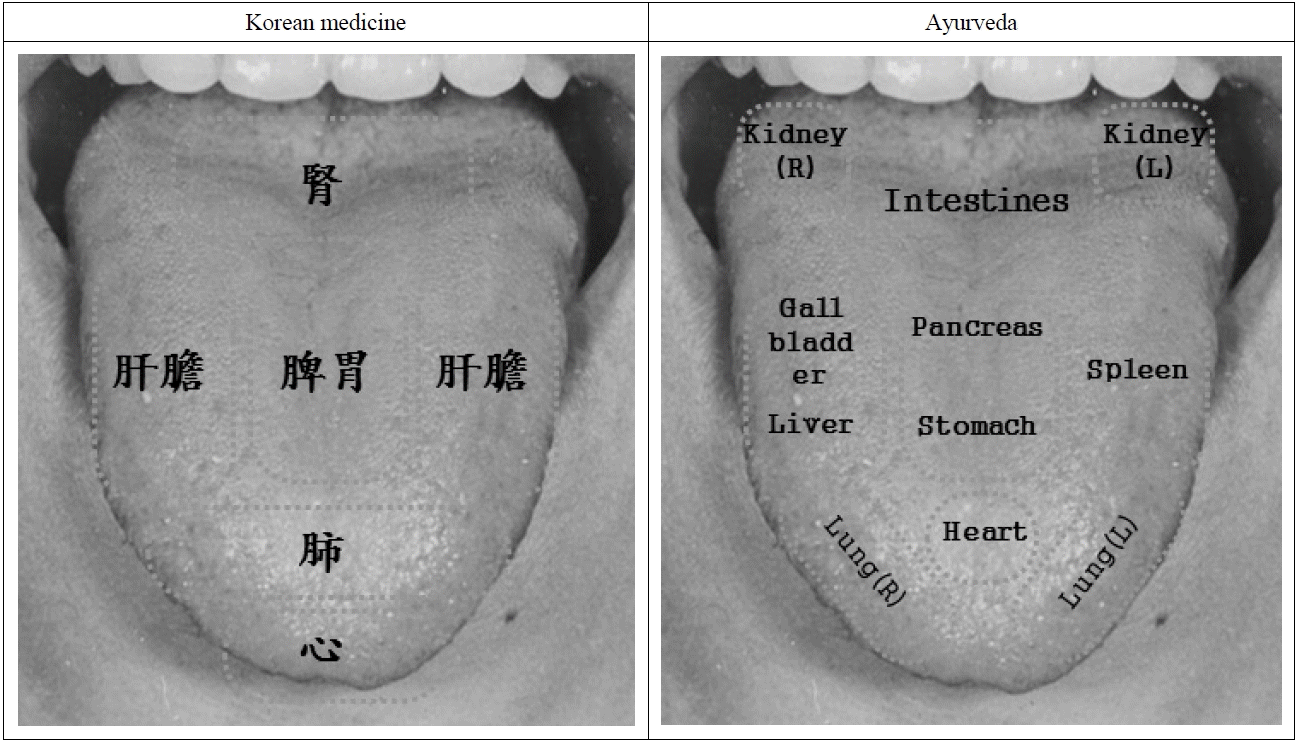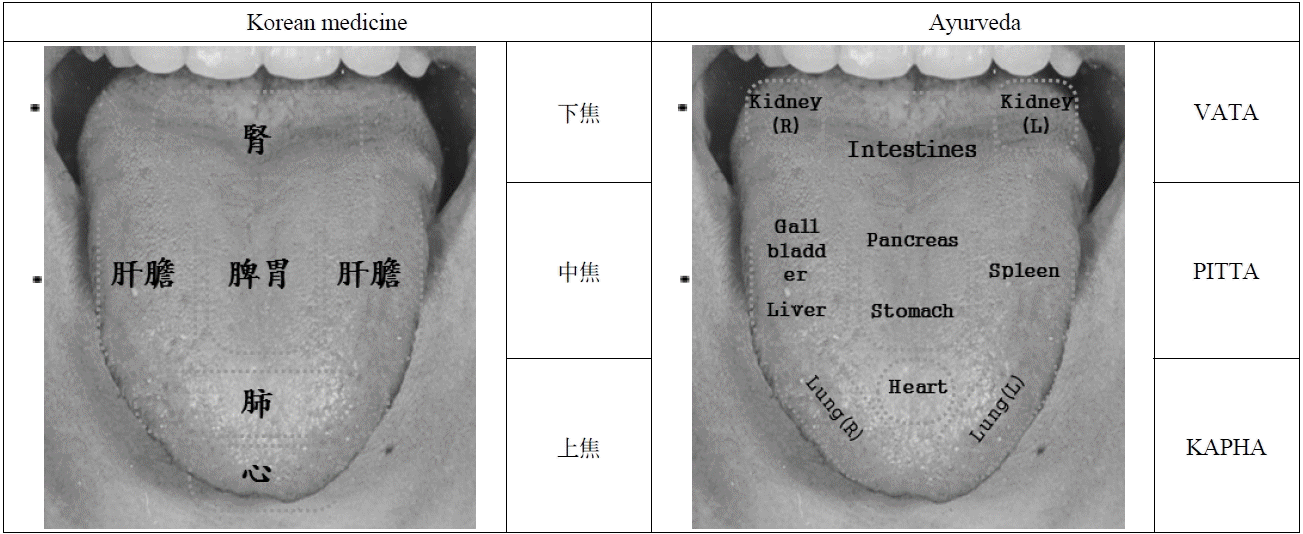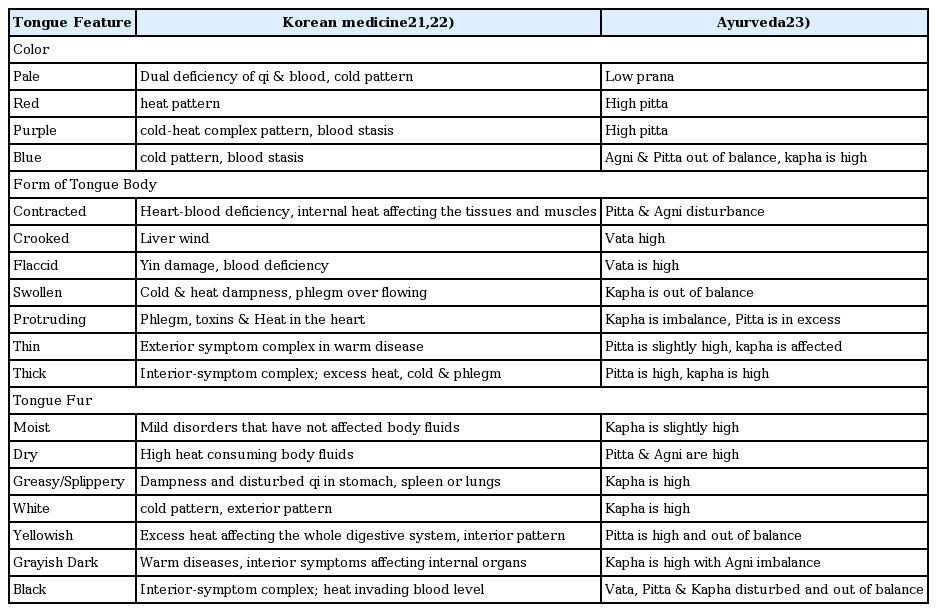References
1. Kim GW. Byeonjeunghak 2ed.th ed. Wonju: Department of diagnostics, College of korean medicine, Sangji university; 2007. p. 15.
2. Park JK, Yun CY. The study on the history of tongue diagnosis(I). The Journal of Daejeon Oriental Medicine Research Institute of Korean Medicine 1997;5(2):281–92.
3. Park JK. The study about a principle and meaning of tongue diagnosis. The Journal of Daejeon Oriental Medicine Research Institute of Korean Medicine 1998;2(1):183–206.
4. Yun CY, Park JK. The study on the history of tongue diagnosis. The Journal of Daejeon Oriental Medicine Research Institute of Korean Medicine 1997;1(1):136–55.
5. Park CG, Park JW. Formation and System of the Ancient Indian Medicine (AYURVEDA). Journal of Oriental Medical Classics 1998;11(1):513–674.
6. Kim DG. A Comparative Study of Korean Oriental Medicine & Indian Traditional Medicine. J Korean Oriental Med 2005;26(2):201–16.
7. Korean academy of oral medicine. Oral medicine 2edth ed. Seoul: Komoonsa; 2013. p. 59–60.
8. Park JW, Park CK. Formation and system of the ancient indian medicine(Ayurveda). The journal of Korean medical classics and medical history 1998;11(1):516–674.
9. Betbu S, Serada K. Tongue diagnosis for clinicians – integrating oriental and western medicines Seoul: Koonja; 2005. p. 6.
10. Kim GW. Byeonjeunghak 2ed.th ed. Wonju: Department of diagnostics, College of korean medicine, Sangji university; 2007. p. 16.
11. Walter SK. Ayurvedic tongue diagnosis Twin Lakes: Lotus Press; 2006. p. 233.
12. Park JW. Ayurveda Seoul: Jiyoung Press; 2008. p. 89–165.
13. Kim GW. Byeonjeunghak 2ed.th ed. Wonju: Department of diagnostics, College of korean medicine, Sangji university; 2007. p. 17.
14. Korean medical information cooperation. On board. 2017;1:152–9.
15. Betbu S, Serada K. Tongue diagnosis for clinicians – integrating oriental and western medicines Seoul: Koonja; 2005. p. 4–13.
16. Kim GW. Byeonjeunghak 2ed.th ed. Wonju: Department of diagnostics, College of korean medicine, Sangji university; 2007. p. 18.
17. Walter SK. Ayurvedic tongue diagnosis Twin Lakes: Lotus Press; 2006. p. 233–4.
18. Kim GW. Byeonjeunghak 2ed.th ed. Wonju: Department of diagnostics, College of korean medicine, Sangji university; 2007. p. 19.
19. Lim YG. Tongue diagnosis Seoul: Jungdam; 2003. p. 124.
20. Walter SK. Ayurvedic tongue diagnosis Twin Lakes: Lotus Press; 2006. p. 248.
21. Hong SS. Diagnostics of Traditional Chinese medicine(中醫診斷學) Seoul: Koonja; 2009. p. 47–65.
22. Kim GW. Byeonjeunghak 2ed.th ed. Wonju: Department of diagnostics, College of korean medicine, Sangji university; 2007. p. 14–8.
23. Walter SK. Ayurvedic tongue diagnosis Twin Lakes: Lotus Press; 2006. p. 246–8.
24. Yoon YH. The Significance of the Study on the Formation of East - West Thought and the Establishment of Korean Thought in the 21st Century: A Study for the Integrated Understanding of Korean Ancient Religion-CHUL HAK SA SANG. Journal of Philosophical Ideas 2003;16(6):89–95.




